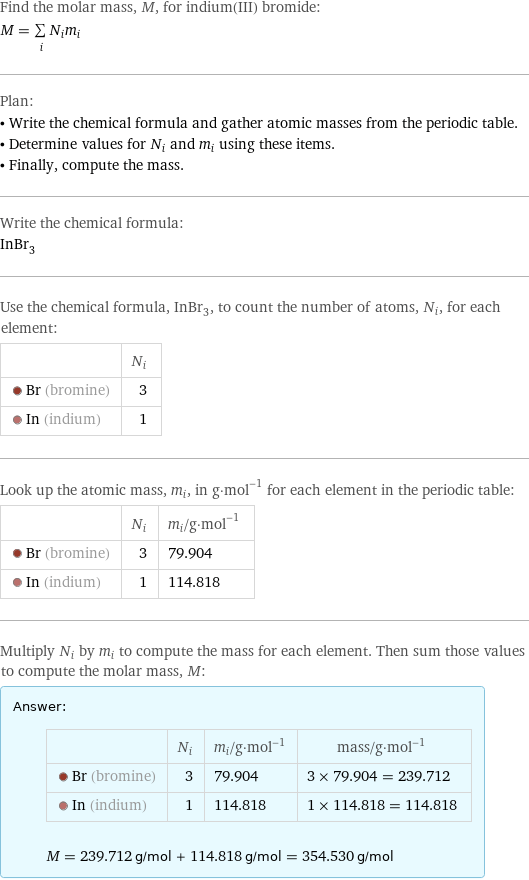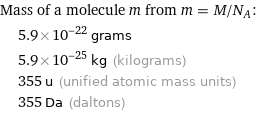Input interpretation

indium(III) bromide | molar mass
Result

Find the molar mass, M, for indium(III) bromide: M = sum _iN_im_i Plan: • Write the chemical formula and gather atomic masses from the periodic table. • Determine values for N_i and m_i using these items. • Finally, compute the mass. Write the chemical formula: InBr_3 Use the chemical formula, InBr_3, to count the number of atoms, N_i, for each element: | N_i Br (bromine) | 3 In (indium) | 1 Look up the atomic mass, m_i, in g·mol^(-1) for each element in the periodic table: | N_i | m_i/g·mol^(-1) Br (bromine) | 3 | 79.904 In (indium) | 1 | 114.818 Multiply N_i by m_i to compute the mass for each element. Then sum those values to compute the molar mass, M: Answer: | | | N_i | m_i/g·mol^(-1) | mass/g·mol^(-1) Br (bromine) | 3 | 79.904 | 3 × 79.904 = 239.712 In (indium) | 1 | 114.818 | 1 × 114.818 = 114.818 M = 239.712 g/mol + 114.818 g/mol = 354.530 g/mol
Unit conversion

0.35453 kg/mol (kilograms per mole)
Comparisons

≈ 0.49 × molar mass of fullerene ( ≈ 721 g/mol )

≈ 1.8 × molar mass of caffeine ( ≈ 194 g/mol )

≈ 6.1 × molar mass of sodium chloride ( ≈ 58 g/mol )
Corresponding quantities

Mass of a molecule m from m = M/N_A: | 5.9×10^-22 grams | 5.9×10^-25 kg (kilograms) | 355 u (unified atomic mass units) | 355 Da (daltons)

Relative molecular mass M_r from M_r = M_u/M: | 355